Last updated on March 22nd, 2022
Our site is reader supported, this means we may earn a small commission from Amazon and other affiliates when you buy through links on our site.
Have you ever given or received Amaryllis for Christmas? These flowers are showy and stunning. Their real name is Hippeastrum. But how do you take care of this new gift, and how do you continue to bring it back year after year? If you want to grow your own from a bulb, this should be planted between October and January.
Planting Amaryllis bulbs
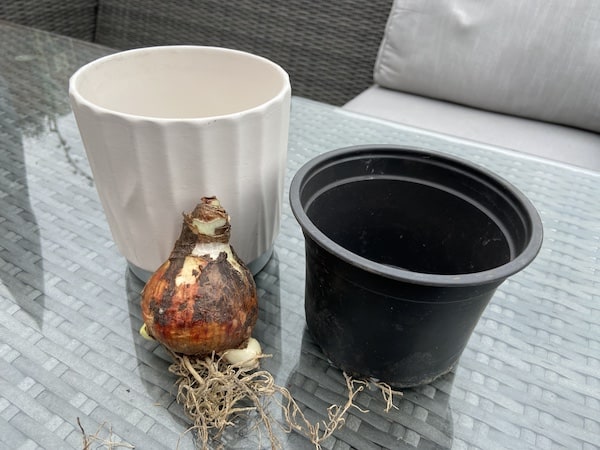
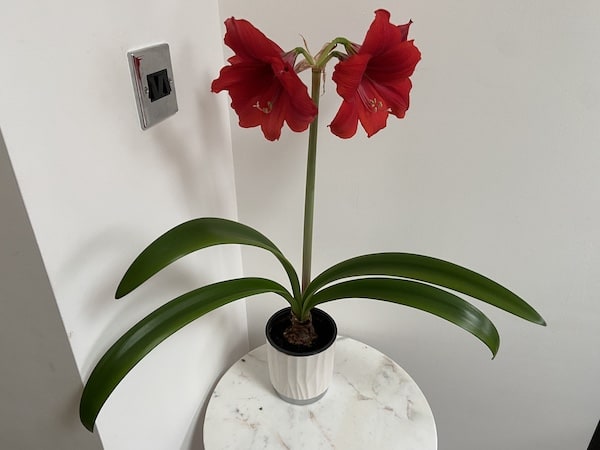
Plant bulbs between October and January
The bulbs are very tender and they need to be planted inside in a pot before you move them. The bulbs should be flowering about six or seven weeks after you have planted them indoors in your container. They should be planted sometime between October and January (as already mentioned) with the earlier date being best so that you can try and have flowers over Christmas.
Plant in multi-purpose compost in a pot slightly larger than the bulb
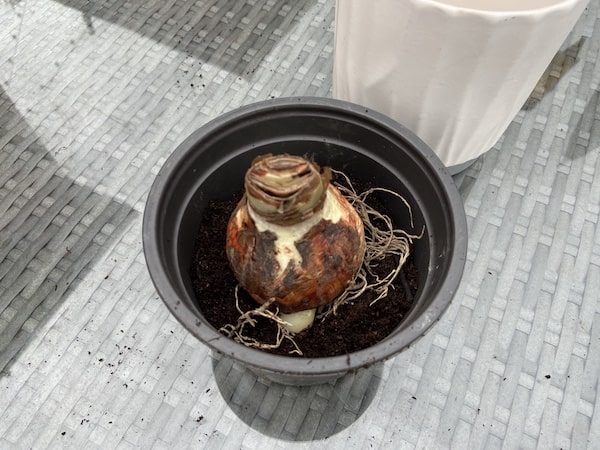
When you are ready to plant the bulbs, add multi-purpose compost into your pots. The pots should be ever so slightly larger than the bulb itself, ideally, you want to choose a heavy pot to help keep the plant stable and upright when it flowers. When you place the bulb inside the pot about two-thirds of it should remain above the surface.
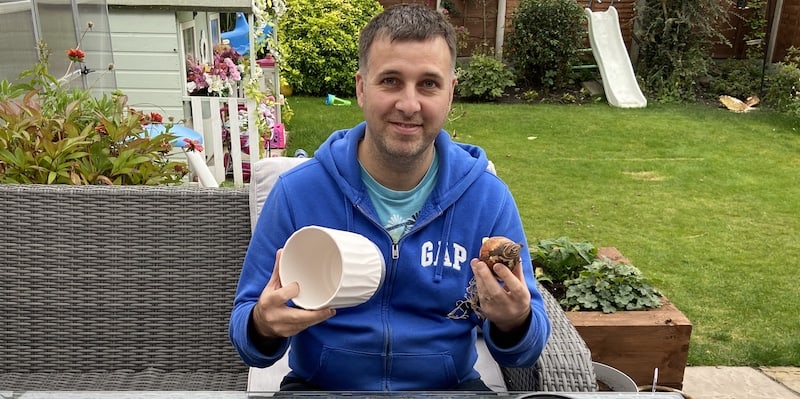
To learn more about how to plant Amaryllis bulbs see my step by step guide here
A room at 21 degrees is perfect for growing Amaryllis
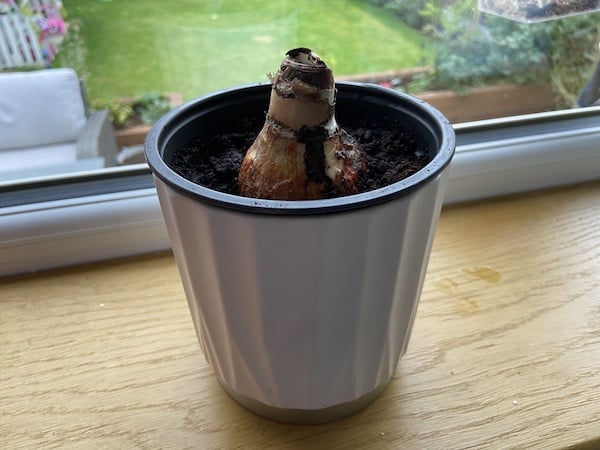
Once planted, the container should be placed in a well-lit area that remains at around 21°C, so most homes are well suited to growing them. You should only water sparingly until such time as you see the new leaves develop on the bulbs, after which you can water more regularly when needed. A top tip is to never want to water so much that water collects in the saucer underneath the container but you also never want the compost to dry out.
Don’t forget to rotate the pot to keep the plant as straight as possible
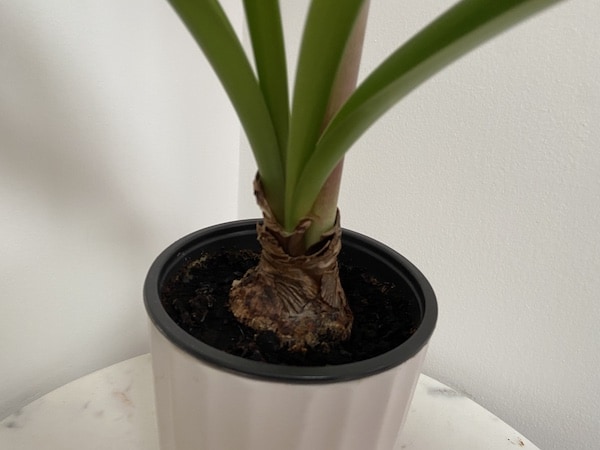
You can turn the pot regularly so that it grows straight up and doesn’t grow towards the light. If you’ve ever had indoor plants and you kept the plant in one specific area of your home you have probably noticed that the leaves will naturally gravitate towards the light. To avoid this, you can keep them growing straight by simply rotating the container on a regular basis.
Stake large flowering varieties to stop them from flopping over
If you were given a cultivar that produces very large flowers you should stake the plant to help it support the extra weight of the flowers. Once you see flowers developing you can move the plants somewhere cooler, where the temperatures hover around 17°C, for the remainder of the flowering time.
Amaryllis Care
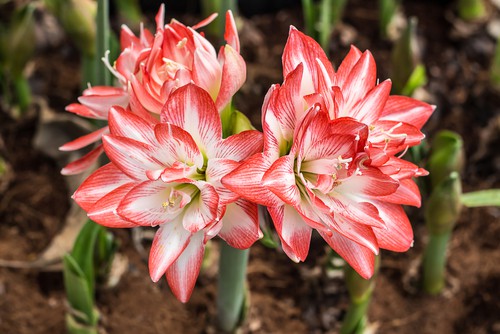
What to do after flowering
Cut flower stalks back and place outdoors for summer
After your Hippeastrum has finished flowering, you can cut down the spent spikes to the base but don’t cut away the leaves just yet. You can continue to carefully water and apply a balanced fertiliser on a weekly basis, with most houseplant feeds being fine for this. The bulbs within the pot can be kept in a greenhouse or outside during the summer as long as they are protected against direct sunlight because this will scorch them, so somewhere with a little dappled shade is perfect.
Move back indoors from around September into a cool room
Once September rolls around you can move the plants somewhere cooler, where the temperatures are around 13°C for 10 weeks. At this stage, you should also cease feeding and reduce watering so that you force the plant into a semi-dormant state.
When this is over, you can cut off the remaining old leaves until they are approximately 10cm from the neck of your bulb. Move the plants to a cooler location for their dormant period. Replace the top 3cm of compost with new compost and then start growing the new bulb the same using the same process you did when you received it as a gift or purchased it yourself.
Ideally, they need repotting once every 3 years
If you continue to protect your Hippeastrum year after year you will need to repot it approximately every three years, between January and March after it has flowered.
Propagating Amaryllis
They are best propagated by taking bulb offsets from any established plants.
If you want to propagate you can do so from the bulb offsets. You can also grow them from seed but that can take up to 6 years to fully flower so most people don’t do this. In terms of growing the from bulb offsets, after about three or four years after you’ve had the plants flowering it will produce offsets that will be perfectly identical to the original parent plant.
Between January and March when you are repotting, ideally you want to separate the offsets and you want offsets that have their own roots. Place them into a separate container with the same compost type of multi-purpose compost in the same method used when planting the original bulb.
Our favourite varieties
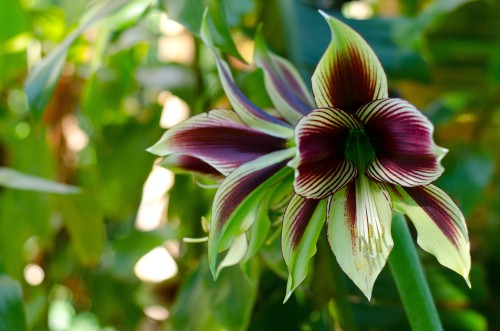
There are plenty of varieties available in bulb form from around October but flowering plants usually become available around Christmas time. Some of the most popular include the Hippeastrum ‘Papilio’ and you can see these stunning flowering in the picture above, other popular varieties include the following:
- Hippeastrum ‘Papilio’ AGM: This produces unusual flowers that are bright white with red streaks through them and a hint of green. The quintessential Christmas colours.
- Hippeastrum ‘Red Lion’: Similarly this produces red flowers that smell beautiful.
- Hippeastrum ‘Star of Holland’: The Star of Holland’s variety is red with white throughout the flowers.
- Hippeastrum ‘Belinda’: This variety produces deep red colours that would blend with a rich Christmas decor quite well.
- Hippeastrum ‘Bestseller’: The Best Seller has pink flowers so it’s slightly different than the traditional Christmas plants you might be given.
- Hippeastrum ‘Lady Jane’: Another great seller is the pink blooms that take on a salmon shade.
Amaryllis Problems
Why won’t my Amaryllis flower?
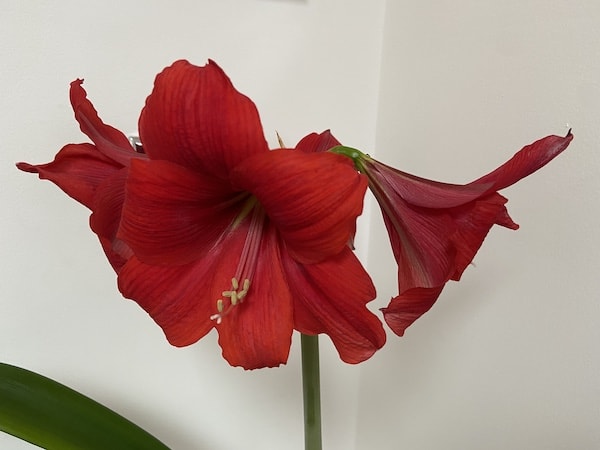
The biggest problem you will face is the failure to flower. This is brought about by many issues. When you are growing them, the bulbs might not flower if you allow them to dry out early on. If you put them somewhere far too shady without enough sunlight or warmth, or you underwater them the summer prior, it can all impact how many flowers you see, if any.
The next biggest issue is fungal diseases. Indoor plants, in particular, run the risk of fungal diseases and bulb pest attacks if there is enough circulation or they’re overwatered. If you put the containers outside for the summer make sure you prevent slugs and snails from eating away at your plants. Try copper tape around the pots to protect them from slugs if needed.


